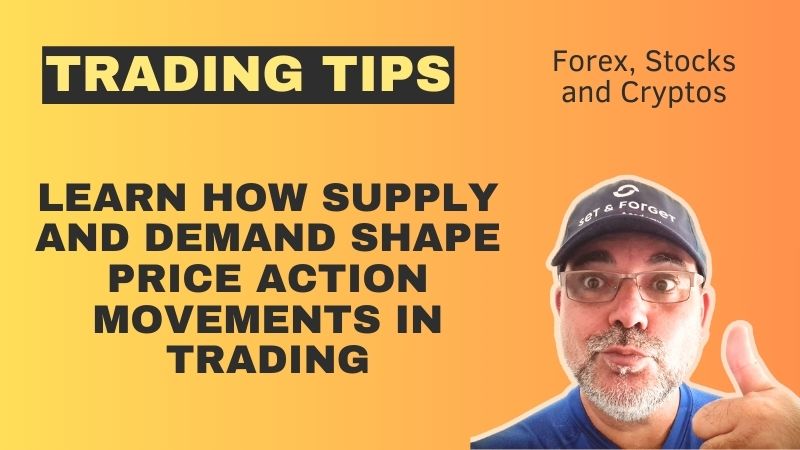16 Oct 2024

Welcome to the fascinating world of financial markets, where every tick and turn tells a story driven by the timeless forces of supply and demand! Imagine entering a bustling marketplace: vendors showcasing their goods, buyers negotiating prices, and an ever-shifting dance between what’s available and what people desire. This dynamic interplay doesn’t just exist in physical markets; it shapes the very foundation of our global economy. In this blog post, we’ll unravel the complexities of supply and demand within financial markets—exploring how these twin pillars influence everything from stock prices to interest rates. Whether you’re a seasoned investor or just starting your journey into finance, understanding these dynamics is critical to mastering market trends and making informed decisions.
Introduction to Supply and Demand in Financial Markets
In the fast-paced world of financial markets, understanding what drives prices can make all the difference between a successful trade and a costly mistake. At the heart of this intricate dance lies one fundamental principle: supply and demand. These two forces shape market behaviour in almost magical ways for those not privy to their secrets.
Imagine walking into a bustling marketplace. Vendors shout about their goods while buyers weigh options, looking for value. This dynamic scenario mirrors what happens every day in trading rooms around the globe. Traders must navigate through waves of buying and selling—each influenced by countless factors—while keeping an eye on how these dynamics affect price movements.
Whether you’re an experienced trader or just starting your journey, grasping supply and demand is crucial for crafting effective strategies. As we explore this concept further, you’ll discover its powerful impact on market trends, from Forex to stocks. Get ready to unlock insights that could enhance your trading decisions and lead you toward greater success!
Understanding the Basics of Supply and Demand
Supply and demand form the cornerstone of economic theory. They dictate how prices move in any market, including financial ones. At its core, supply refers to how much of a product or asset is available for sale. Demand indicates how much buyers want that product or asset at various price points.
When demand exceeds supply, prices tend to rise. Conversely, if supply outstrips demand, prices usually fall. This dynamic creates a constant push and pull in the markets. Traders can observe these shifts through charts and patterns. Recognizing when an asset is overbought or oversold helps identify potential entry or exit points. Understanding these fundamentals gives traders an edge. It allows them to predict market movements days and weeks before the actual movement happens rather than relying on news events or trends.
Watch the one-hour video below to learn more about supply and demand and price action.
The Relationship between Price Action and Supply & Demand
Price action is the heartbeat of financial markets, reflecting the constant tug-of-war between buyers and sellers. Understanding this dynamic helps traders grasp how supply and demand interact to shape market movements.
When demand outstrips supply, prices tend to rise. This upward momentum indicates strong buyer interest. Conversely, when supply exceeds demand, prices fall as sellers compete to offload their assets. These shifts create price action patterns that savvy traders learn to recognize in charts. Each price point tells a story about market sentiment and potential future movements.
Traders can more effectively pinpoint entry and exit points by analyzing these price action patterns alongside supply and demand levels. The relationship between price action and supply-demand dynamics is crucial for making informed trading decisions in any market environment.
Examples of Supply and Demand at Work in Forex Trading
In Forex trading, supply and demand manifest daily through currency pairs. When a country’s economy shows growth, traders anticipate increased demand for its currency. This surge can lead to price appreciation.
Take the Euro against the US Dollar as an example. If European economic data indicates strong performance, traders will rush to buy Euros. The heightened buying pressure drives up the price. Conversely, geopolitical tensions can cause uncertainty around a country’s currency. Traders might flood out of that market, leading to increased supply and lower prices.
Understanding these dynamics is crucial for fundamental analysts but not traders using supply and demand strategies. Observing news events and economic indicators does not help identify potential supply and demand shifts within the Forex and Stock markets. By staying informed, you will probably be biased and influenced by professional traders and do what most traders are good at: losing money.
Examples of Supply and Demand at Work in Stock Trading
Supply and demand are critical in stock and Forex trading, influencing daily price movements. When a company’s earnings report surpasses expectations, excitement builds among investors. This surge of interest leads to increased buying activity, driving the stock’s price higher.
Conversely, sellers often flood the market if news breaks about potential regulatory issues or poor performance forecasts. Here, supply outstrips demand as fear takes hold. The result? Prices typically drop as traders rush to exit their positions.
Consider tech giants during product launches. Anticipation spikes demand for shares ahead of time. If the launch is successful, prices soar further due to heightened optimism. However, if consumers respond poorly to new products, investors might panic-sell.
These actions illustrate how shifts in supply and demand create dynamic patterns that traders can observe on a price chart and react to within the ever-evolving landscape of stock trading.
How to Use Supply and Demand in Your Trading Strategy
To effectively integrate supply and demand into your trading strategy, identify key supply and demand levels on charts. Consider using limit orders near identified supply and demand zones. This allows you to enter trades at more favourable prices while minimizing risk.
Additionally, you can use this approach combined with other technical indicators like moving averages or oscillators for added confirmation. However, this is not really necessary if you use the Set and Forge’ts Supply and Demand Trading Course.
Always be mindful of market news and events, as they can impact supply-demand dynamics significantly. Keeping an eye on economic data releases can enhance your understanding of potential price movements concerning fundamental factors.
The Power of Supply and Demand in Achieving Success in Trading
Understanding supply and demand is essential for anyone involved in trading. These fundamental concepts drive price movements across various markets, including Forex and stocks. Recognizing how these forces interact can give traders a significant edge.
By observing the behaviour of buyers and sellers, traders can identify potential entry and exit points. Developing strategies that incorporate supply and demand principles enhances decision-making processes. This approach keeps you grounded in market realities rather than relying solely on emotional reactions or rumours.
However, it’s crucial to remain vigilant against common pitfalls when analyzing these dynamics. Misinterpretations or overreliance on historical data can lead to costly mistakes. Staying disciplined while continuously learning about market trends ensures long-term success.
Harnessing the power of supply and demand informs your trades and builds confidence in your strategy. As you deepen your understanding of these supply and demand core concepts, you’ll be better equipped to navigate the complexities of financial markets effectively. With practice, patience, and a sound approach based on supply and demand principles, achieving trading success becomes attainable.









